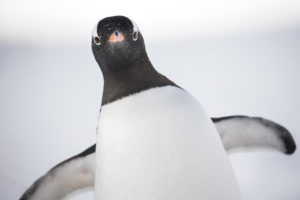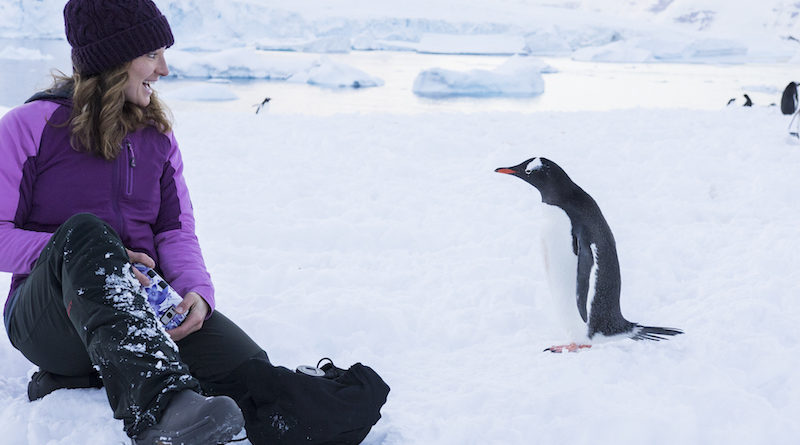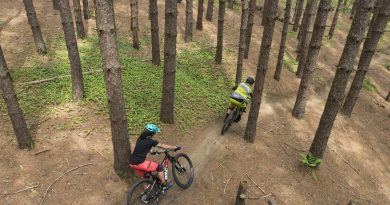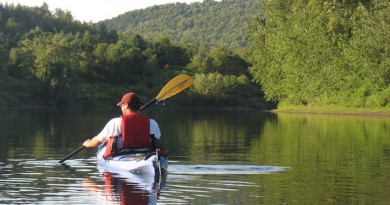What’s Your Climate Bucket List?
The places to see before they die.
Growing up in Williamstown, just south of Barre, Aaron Gould-Kavet was home-schooled. He ski raced at Mount Mansfield Academy, earned a degree in sustainable development at Hampshire College and then out west to ski bum at Alta, Utah. Then, after what might seem like the typical trajectory for a Vermont-raised ski bum, his life took a hard left turn.
“For as long as I can remember, I’ve dreamed of Morocco,” he said when we met about eight months ago, on one of his trips back to Vermont. More than just dream, Gould-Kavet learned Arabic, moved to Morocco and befriended a local mountain guide, Ahmed Achou, moving into his guest house or “gite,” living with his family and getting to know and understand the local customs and culture of the Berbers or Amazigh.
Somewhere in that journey, perhaps as he skinned across the snowfields that look out across the Sahara desert, Gould-Kavet evolved from ski-bum world traveler into an activist.
In this issue, Gould-Kavet tells the story of his travels and the plight of the people he befriended in. Morocco, and will be showing “Amazigh,” the movie he made, on Nov. 16th at Rabble Rouser in Montpelier It’s as much a documentary of how climate change is impacting a local culture as it is an adventure ski film. As Gould-Kavet watches the snowpack recede from the Atlas Mountains, the people he befriended there are also seeing their farms dry up.
As Gould-Kavet writes: “Mountain tourism can sustain these vulnerable communities, but it can also change them beyond recognition. It can help farmers weather the effects of climate change, yet travel is itself a major driver of greenhouse gas emissions (the global tourism industry accounts for 5.5% of global greenhouse gas emissions). It can incentivize environmental preservation, reducing, for example, overgrazing and logging, but it also brings with it graffiti, trash, human waste and other pollutants.
That dichotomy is also apparent in our other adventure destination story in this issue, “Skiing Antarctica.” Sugarbush’s Chief Recreation Officer John Egan and Richmond-raised filmmaker and photographer Tyler Wilkinson-Ray traveled to Antarctica a year ago with Ice Axe Expeditions. It was a recreational trip, designed to let 100 or so avid skiers set down tracks on a

continent few people see. Organizer Doug Stoup has been guiding trips to the Arctic and Antarctic for many years – both adventure trips and scientific expeditions— and been on the front lines of climate change. As you read this, a block of ice twice the size of Manhattan is cracking away from the continent and penguin colonies are collapsing.
So why add to the problem? Why inflate your carbon footprint by flying thousands of miles to visit these places? Perhaps to serve as a witness, to bring back stories of what we could lose and share the urgency, so eloquently expressed by activist Greta Thunberg this past September, that countries and businesses, need to act to save our planet.
The book, 1,000 Places to Visit Before You Die is on my bedstand. Maybe it’s time for a sequel: 1,000 Places to Visit Before They Die.
If there is one person who has seized the most out her time on this planet, it is triathlete Karen Newman of Charlotte. We have written about her struggles with recurring cancers and her refusal to let that stop her several times.
In this issue she tells the unpublished story of her most recent and, sadly, possibly her last, big victory in her age group at the National Championships in aquathlon. Her essay “Blessings,” p. 44, is an inspiring and heartbreaking story and one I hope we can all learn from.
—Lisa Lynn, Editor
Featured Photo Caption: Penguins may be a rare sight, even in Antarctica, as their numbers dwindle. Photo by Tyler Wilkinson-Ray




